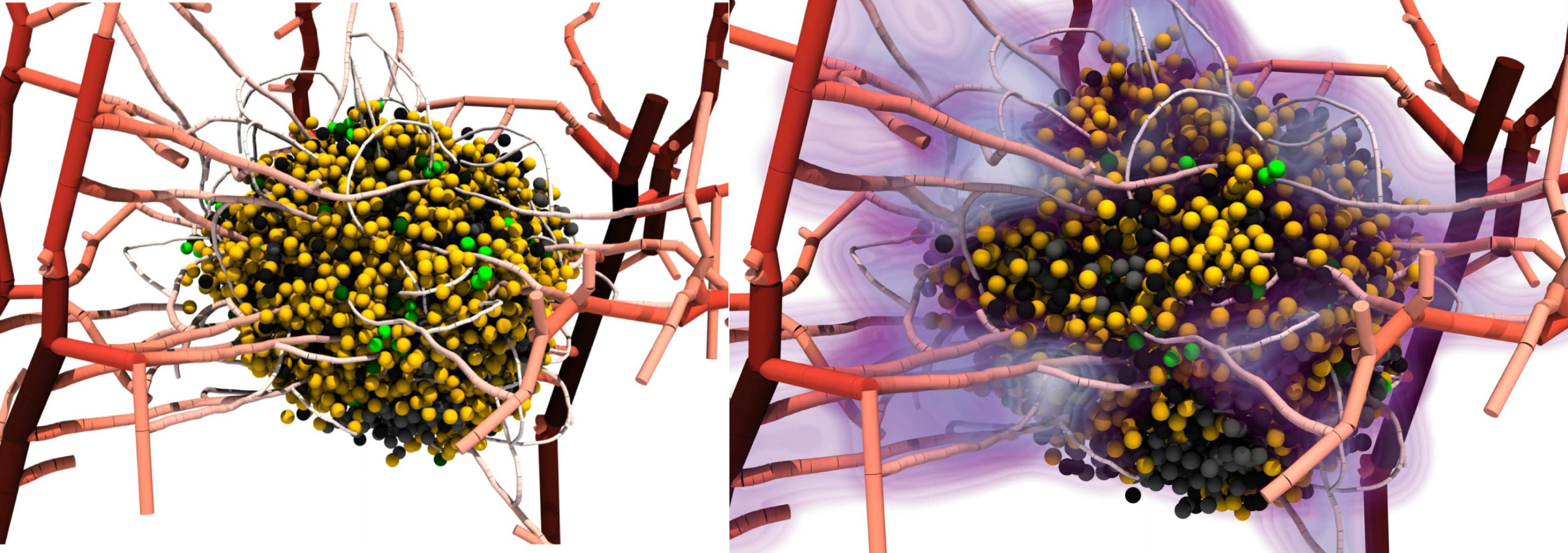
Final tumour before treatment (left) and at early stage of treatment (right). (Image: adapted from T. Duswald et al., Computer Methods in Applied Mechanics and Engineering, 2024)
Choosing the right cancer treatment is a massive undertaking involving multiple stages, high experimental complexity and significant costs. Currently, two main methods are used to find the best possible treatment solutions: in vitro testing and clinical trials. However, predicting the drug effects on each individual patient remains the Holy Grail of personalised medicine.
Born from CERN openlab in the CERN IT department, BioDynaMo is an innovative tool for "in silico" testing, i.e. experimentation carried out on a computer. Based on mathematical models, it creates and runs complex 3D computer simulations that help understand cancer progression and identify the most effective treatment strategies for specific tumour cases.
In a recent scientific publication, scientists affiliated with CERN, the Technical University of Munich and the University of Texas at Austin demonstrated the significant potential of advancing medical therapy with the help of BioDynaMo. The model successfully replicates medical data on recorded tumour growth and the effects of two anti-cancer drugs, Doxorubicin and Trastuzumab. By fitting the BioDynaMo models to the available pre-clinical data, scientists proved the platform's ability to simulate different levels of efficacy of various drugs, treatment combinations and dosage regimens.
BioDynaMo is an open source project that strives to provide the most efficient and performant simulation platform for agent-based models






